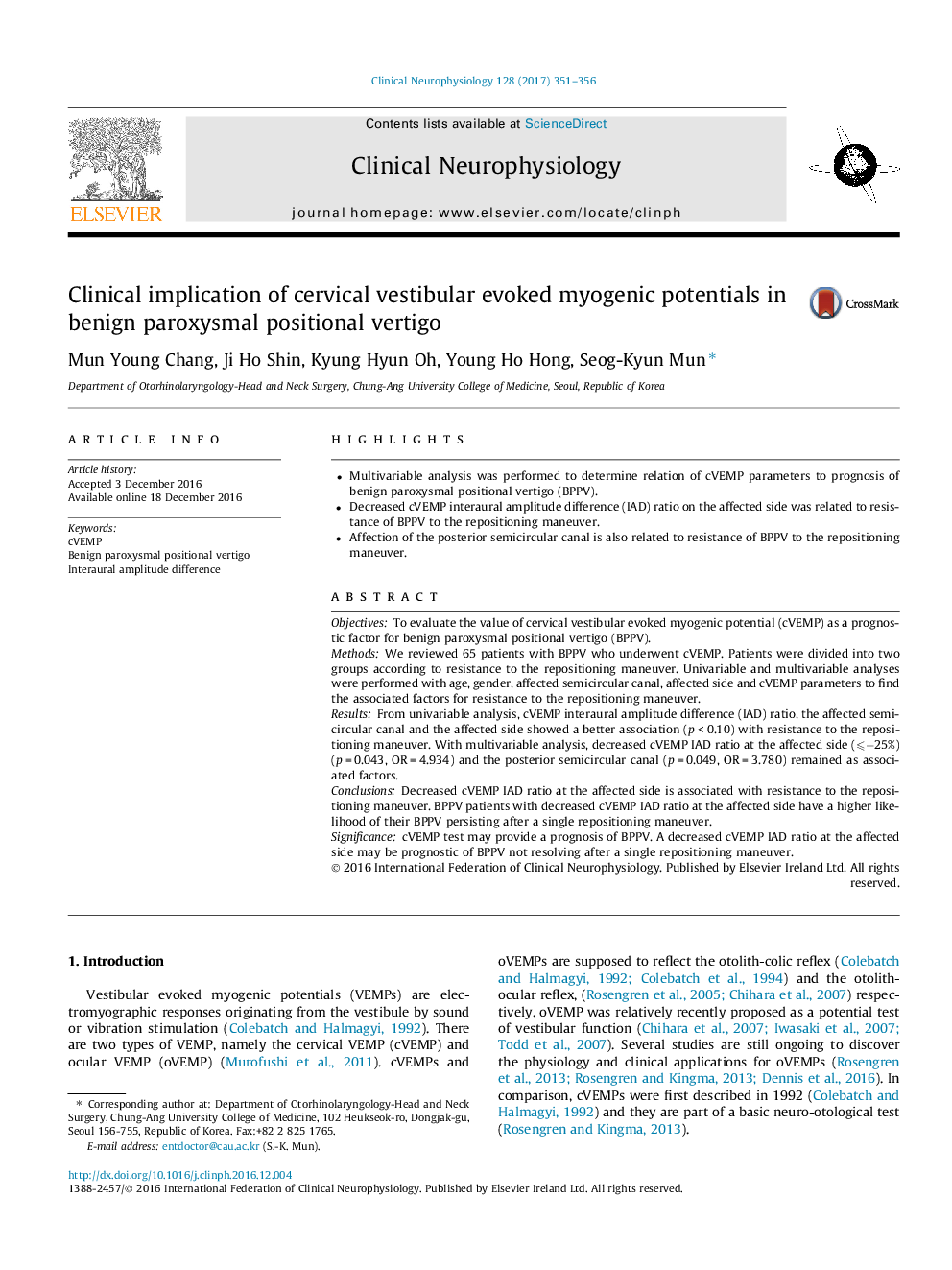| Article ID | Journal | Published Year | Pages | File Type |
|---|---|---|---|---|
| 5627801 | Clinical Neurophysiology | 2017 | 6 Pages |
â¢Multivariable analysis was performed to determine relation of cVEMP parameters to prognosis of benign paroxysmal positional vertigo (BPPV).â¢Decreased cVEMP interaural amplitude difference (IAD) ratio on the affected side was related to resistance of BPPV to the repositioning maneuver.â¢Affection of the posterior semicircular canal is also related to resistance of BPPV to the repositioning maneuver.
ObjectivesTo evaluate the value of cervical vestibular evoked myogenic potential (cVEMP) as a prognostic factor for benign paroxysmal positional vertigo (BPPV).MethodsWe reviewed 65 patients with BPPV who underwent cVEMP. Patients were divided into two groups according to resistance to the repositioning maneuver. Univariable and multivariable analyses were performed with age, gender, affected semicircular canal, affected side and cVEMP parameters to find the associated factors for resistance to the repositioning maneuver.ResultsFrom univariable analysis, cVEMP interaural amplitude difference (IAD) ratio, the affected semicircular canal and the affected side showed a better association (p < 0.10) with resistance to the repositioning maneuver. With multivariable analysis, decreased cVEMP IAD ratio at the affected side (⩽â25%) (p = 0.043, OR = 4.934) and the posterior semicircular canal (p = 0.049, OR = 3.780) remained as associated factors.ConclusionsDecreased cVEMP IAD ratio at the affected side is associated with resistance to the repositioning maneuver. BPPV patients with decreased cVEMP IAD ratio at the affected side have a higher likelihood of their BPPV persisting after a single repositioning maneuver.SignificancecVEMP test may provide a prognosis of BPPV. A decreased cVEMP IAD ratio at the affected side may be prognostic of BPPV not resolving after a single repositioning maneuver.
